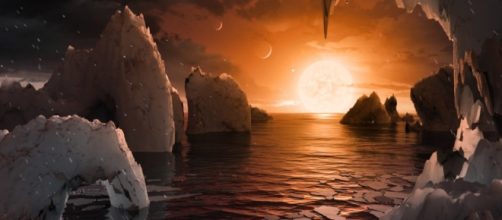Seven planets about the same size of the earth were discovered in a system called TRAPPIST-1. This group of exoplanets is orbiting around a star and three of them are situated in what is known as the habitable zone-the region around which a planet is able to have water. This is the first time that such a large number of planets have been found around a single star and open ample possibilities for finding worlds which can support life outside of the solar system. It´s believed that this discovery will help into getting close to discover such worlds.
TRAPPIST-1
This is a system of planets trapped by the gravitational pull of a dwarf star located 40 light years away from earth in the direction of the constellation Aquarius. Two planets had been discovered previously in May 2016 in the system and just recently, scientist confirmed the existence of five additional planets, making a total of seven planets. The seven exoplanets are rocky ones and all of them are closer to their host star than Mercury is to the sun. It´s believed that liquid water may exist in all of them, despite their closeness to their star.
TRAPPIST-1 Star
As opposed to the sun, this Dwarf Star is very cold; it has 8% its mass and 12% the radius of the sun and it´s approximately 500 million years old.
The star is rich in metals with 109% compared to the sun´s and its luminosity is 0.05% that from the sun and it´s emitted in the infrared spectrum. To date, there are seven known planets orbiting around this star, with three of them situated in what is known as the habitable zone.
Habitable zone
This is a region around a star in which a planet is located at a suitable distance such that it can allow the development of liquid water, based on its atmospheric pressure. This habitable zone is determined based on the earth´s position around the sun and the amount of radiant energy it receives. It´s believed that 40 billion earth-sized planets exist in the habitable zones of stars similar to the sun in the Milky Way.
With more exoplanets discovered and so many galaxies in the universe, this estimate increases even more.
Good source of study for the next decade
With the aid of Hubble Space Telescope, scientists are observing this system with the aim of detecting their atmospheric contents. It´s believed that this system will allow astronomers to study their atmospheres and other characteristics for decades ahead. It´s expected that Webb Space Telescope which is schedule to be launched on 2018 will permit the detection of water, methane, oxygen and ozone contents of the exoworlds; moreover, their temperatures and surface pressure will allow determining their habitability.

